Japanese people loves tofu so much that it appears in various Japanese traditional dishes. In addition, there are so many different kinds of tofu even at the supermarket. Therefore, if you are now in Japan or are interested in Japanese food, it is recommended to differentiate between these types to find the one you need. Today, in this article, we would like to introduce about Momen Tofu (木綿豆腐)! Let’s go and find out!
What is Momen Tofu?
Tofu is made by adding bittern (the leftover thing that is formed when you extract salt from seawater) to soymilk. Like soybeans, it contains a lot of protein, but easy to digest and absorb.
In Japanese, momen (木綿) literally means “cotton” and momen tofu refers to firm or hard tofu. It has rough texture and a rich flavor. Other than momen tofu, there is another common type of tofu named “kinu” or “kinugoshi” (きぬ/絹ごし), which literally means silk. Just like its name, this type of tofu is soft tofu which has a silky and smooth texture.
Because of its firm texture, unlike silken tofu, momen tofu is recommended for stew, stir-fry while Kinu Tofu can be used in Hiyayakko, salads, etc.
Health Info
Let’s take a look at this table to see the nutritional value of each different types of tofu:
| Energy (kcal) | Protein (g) | Lipid (g) | Carbohydrates (g) | Calcium (mg) | |
| Momen Tofu (per 100g) | 72 | 6.6 | 4.2 | 1.6 | 86 |
| Kinugoshi Tofu (per 100g) | 56 | 4.9 | 3 | 2 | 57 |
| Yaki-dofu (per 100g) | 88 | 7.8 | 5.7 | 1 | 150 |
As you can see from this table, firm tofu contains more protein and calcium than silken tofu, with 1.2 grams of dietary fiber and 3.6 grams of sugar per block.
Made from soybeans , tofu is high in fat and low in carbohydrates.
Tofu is a popular food that is suitable for replacing meat, which tends to increase the calorie content per gram, such as flour dishes (okonomiyaki) and sweets, which are high in sugar, and ground meat hamburgers.
History of Firm Tofu
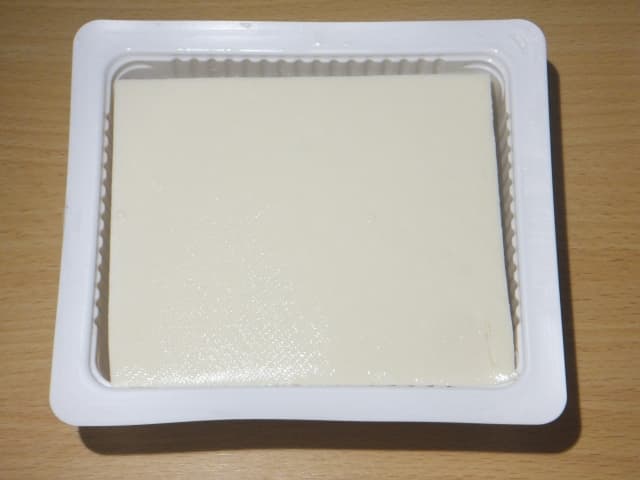
Origin of tofu
The origin of tofu is actually not clear. There are various theories on the birth of this dish.
Originated in the Han Dynasty
According to one theory, it was founded 2,000 years ago by King Huainan and Liu An of the Han dynasty in China. However, since there is no record of tofu until the Tang Dynasty (618-907), most of people do not believe in this theory.
Originated in the Tang Dynasty
The most influential theory is that tofu first appeared in the middle of the Tang dynasty from 8th to 9th century. In the 6th-century, a Chinese book named “Seimin Yojutsu” (Qi Min Yao Shu) contained a description of soy sauce, but not tofu. Therefore, tofu was not yet available in those days.
The word “tofu” is said to have first appeared in “Sei-iroku” (清異録) written 1000 years ago. As the result, most of people believe that the origin of tofu was in the middle of the Tang Dynasty (8th-9th century).
Introduction to Japan
After its invention in China, tofu was then introduced to Japan during the Nara and Heian periods. It seems that during the “Kentoshi” (遣唐使時代), Buddhist monks brought the knowledge of “tofu” to Japan and popularized it along with Buddhism.
At that time, it was the food for special classes such as monks and aristocrats. After that, in the Edo period, tofu finally appeared in the table of the common. However, during this time, it is believed that people only ate firm tofu (or momen tofu). Thanks to this boom, so many tofu dishes were born. Kinu tofu was then invented in the middle of the Edo period. Tofu was so popular in the Edo period as there were not only stores but also street vendors selling its.
In 1782, “Tofu Hyakuchin” (豆腐百珍), a book which introduces 100 differents tofu dishes, became a best-seller.
“Kentoshi” (遣唐使時代) is Japanese missions to Tang China during the Tang Dynasty and Nara periods. Kentoshi-sen (遣唐使) were also the name of the ships that carried the Imperial Japanese Envoys to China. These envoys places an important role as the cross-cultural exchanges between Japan and China. The mission is to acquire as much academic and technological knowledge from the advanced nation China. As a matter of fact, food such as miso, igyoza or tofu were also included.
Firm Tofu FAQ
- When to use Firm Tofu and Silken Tofu?
-
As you know, there are two common types of tofu in Japan: momen (firm) tofu and kinu (silken) tofu.
Firm tofu has a good flavor and is hard to crumble so it is suitable for stew, stir-fry and tofu hamburger. Otherwise, the soft and smooth texture of kinu tofu is suitable for hiyayakko, salads or soup, etc.
- What is Atsuage and Kinu-atsuage?
-
Atsuage (厚揚げ) is generally deep-fried momen tofu (or firm tofu) that has been drained of water and is characterized by its rich flavor. On the other hand, kinu-atsugae (絹厚揚げ) is deep-fried tofu made from silken tofu (kinu tofu) with a smooth texture.
Other than Atsuage, if you like fried tofu, we also recommend Abura-age (油揚げ). Let’s find out here!
How to make Firm Tofu?
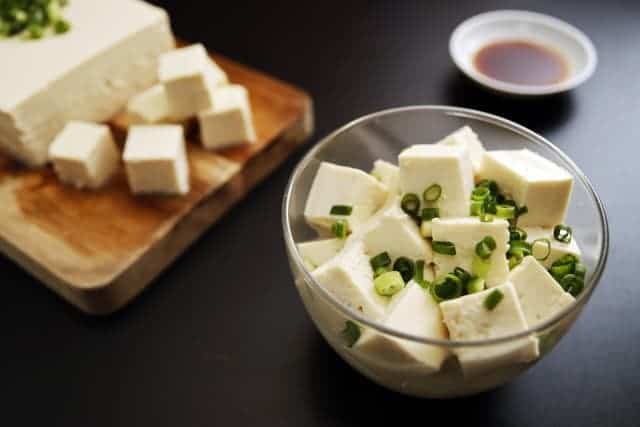
Ingredients
| Ingredients | |
| Soybean | 300g |
| Water | 2800ml |
| Bittern | 15-20ml |
How to make Momen Tofu (hard tofu) at home?
- Soak the soybeans in 6 cups of 1200ml of water.
- Put soybeans in a blender and grind it well.
For water, it is recommended to prepare water that has good taste such as mineral water.
Boil 1600ml of water and bring it to a very light boil.
Add the mixture of raw soybeans. Simmer for about 10 minutes and be careful not to boil over. After boiling, turn off the heat and skim off the foam.
Squeeze the boiled mixture with a strainer. The juice that is squeezed out is soymilk, and what is left in the cloth is called okara.
Reheat the squeezed soy milk to 75°C.
When the temperature reaches 75°C, add the prepared bittern to about two-thirds of the soy milk and stir. Add the rest of bittern while slowly stirring. When a clear, yellowish layer begins to form, stop adding bittern.
After 15 minutes, the tofu will be divided into two part: curds (white solid) and whey (yellow liqid). The solid part (curds) will turn into tofu.
Prepare the mold for making tofu and place the cloth inside.
Put the curds (solid part) into the mold, wrap the loose end of the cloth over the top and place a weight on top to press. Leave it as for about 20 minutes.
After 20 minutes, remove the weight from the mold, take out the tofu together with the cloth. Put it in cold water to remove the cloth easier.
After your tofu is done, you can store it in cool place such as the refrigerator. It’s now ready to become a part of amazing Japanese dishes!
Restaurants/ Stores
Although tofu is indispensable ingredient and you can buy it at any supermarket, we also recommend you to buy tofu at specialized stores. Those stores have a way better taste tofu than the normal one at supermarket. Let’s find out some stores here!
Higuchi Tofu (樋口豆腐)

About a 2-minute walk from Ikebukuro Station C1 Exit, “Higuchi Tofu” is a long-established tofu shop that has been in business for over 90 years. Starting with hard tofu and soft tofu, as well as tofu shop classics such as fried tofu, thick fried tofu, there is also a wide variety of menus such as sata andagi and apricot kernel tofu made with soy milk on Fridays only. Their creativity in making tofu is really admirable!
Araya Tofu (あらいや豆腐)
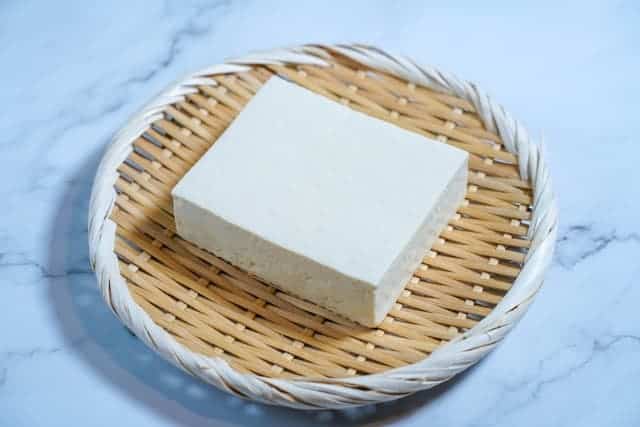
About a minute and a half walk from Yukigaya Otsuka Station, this stylish Japanese-style shop, Araya Tofu Shop, is so popular that local celebrities frequent visit. This shop sells additive-free tofu made from domestic soybeans and natural bittern. In addition, they also will teach you how to eat delicious tofu for each season and type of tofu.
Enomoto Tofu (榎本豆腐)
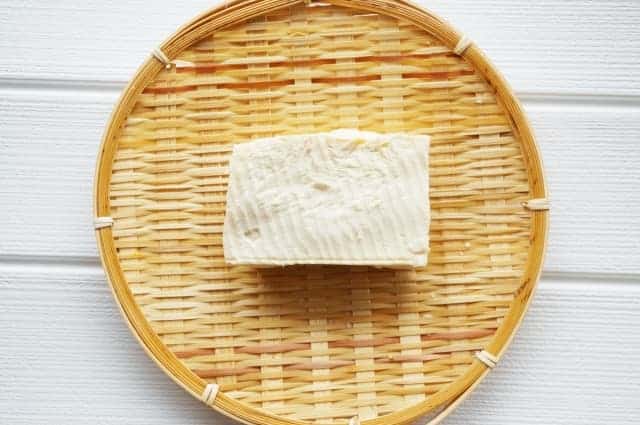
“Enomoto Tofu Shop” doesn’t look like a tofu shop at first glance because of its stylish appearance. The parking space is large, so it’s perfect for shopping while driving.
In addition to standard products such as tofu, fried tofu, and fried tofu, okara croquettes, tofu hamburger cutlets, and side dishes unique to a tofu shop are also exquisite. Ice cream in this store, which has the exquisite flavor of tofu and the unique sweetness, is also a must-try item!
Online stores
Takeaway
There are a lot of types of tofu in Japan. However, the most two common types are momen (or hard tofu) and kinu (or silken tofu). With the rough texture, you can try cooking this hard tofu with so many dishes. The making process of it is not simple at all, but if you want to, you can challenge yourself by following our recipes!
Click here if you want to find out more about dishes from tofu.

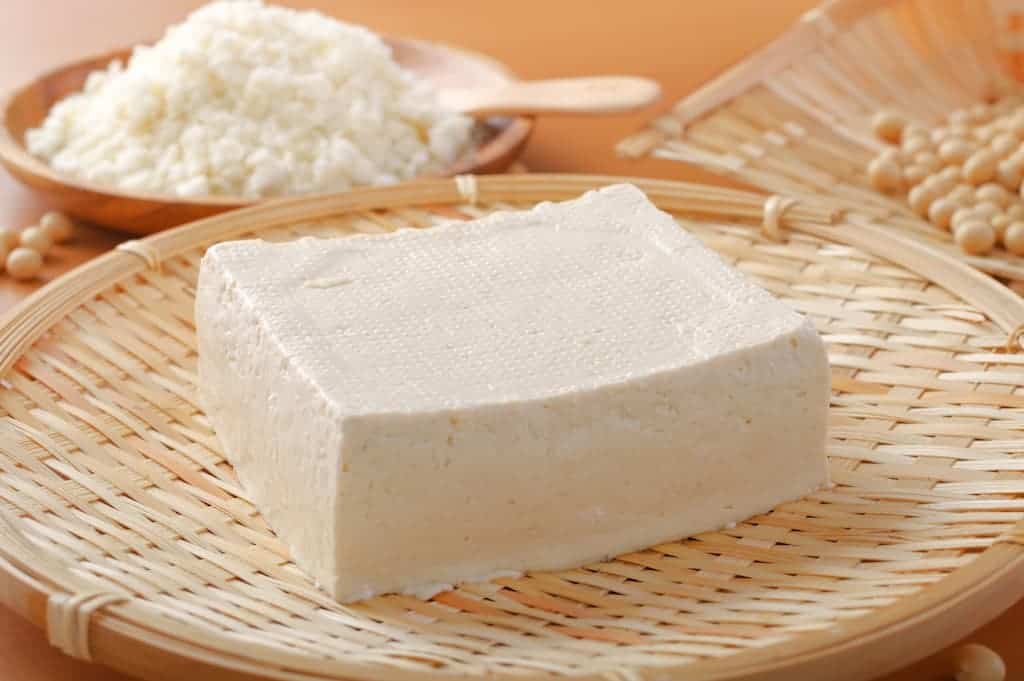
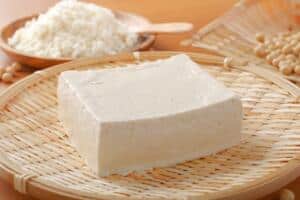
Comments